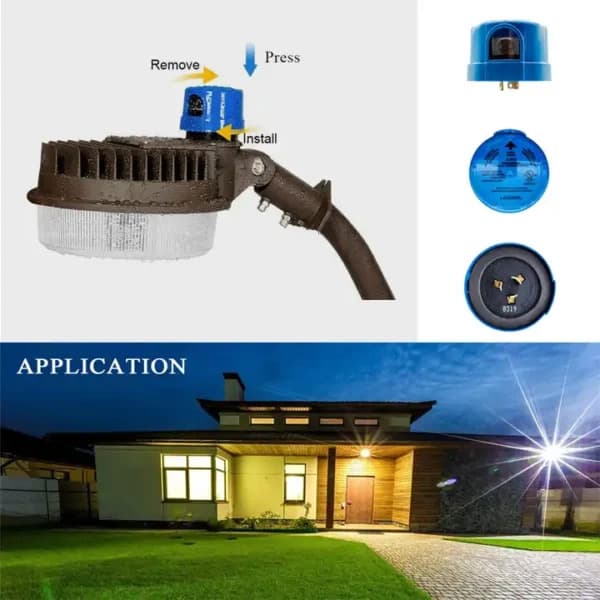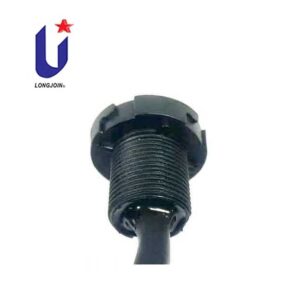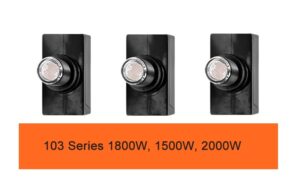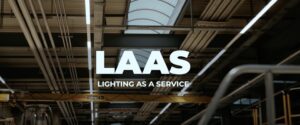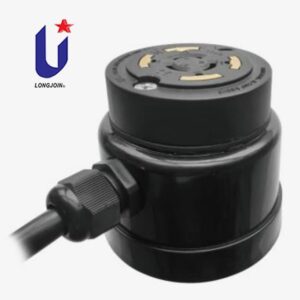Como as fotocélulas ajudam a atingir metas de economia de energia?
Introduzir
As cidades crescem e os custos de energia sobem. Sentimos mais pressão para encontrar soluções de iluminação mais sustentáveis e inteligentes. Os sistemas de iluminação tradicionais consomem energia mesmo quando não são necessários. Os postes de luz podem permanecer acesos por muito tempo depois do nascer do sol. Isso é desperdício.
Conheça as fotocélulas: uma inovação pequena, mas poderosa, que ajuda os sistemas de iluminação a pensarem por si mesmos. Os sensores de fotocélulas da Long-Join oferecem controle inteligente da iluminação. Eles não só economizam energia, como também transformam o funcionamento das luzes.
Qual o papel das fotocélulas na eficiência energética?
Os sistemas de iluminação frequentemente desperdiçam energia. Eles não se adaptam às condições do mundo real. As fotocélulas resolvem esse problema. Elas usam a luz natural para ligar e desligar as luzes automaticamente. Os sensores de luz não seguem horários fixos nem precisam de controles manuais. Eles reagem à luminosidade real ao seu redor. Essa mudança para operações inteligentes beneficia cidades e campi. Também beneficia empresas.
Quer saber como um dispositivo tão pequeno pode gerar uma grande economia de energia? Veja como. Uma fotocélula, ou sensor de luz, detecta a luminosidade externa. Ela então liga ou desliga as luzes em tempo real. Isso significa que as luzes só acendem quando necessário. Chega de desperdício de energia com luzes acesas ao meio-dia.
Na Long-join, projetamos sistemas de controle de fotocélulas que ajudam as cidades a reduzir o consumo de energia para iluminação em até 50%. Ao integrar nossas soluções de controle de iluminação à iluminação pública, estacionamentos e parques industriais, criamos sistemas inteligentes que se adaptam automaticamente ao ambiente.
Recurso | Impacto |
Detecção de luz | As luzes funcionam apenas quando necessário |
Ajuste automático | Evita o uso desnecessário de energia |
Controle Inteligente | Permite agendamento e atualizações em tempo real |
Você pode explorar nossa gama de controles de iluminação pública por fotocélulas para ver como nossas soluções estão ajudando os municípios a cortar custos de energia e, ao mesmo tempo, atingir metas de sustentabilidade.
Como as fotocélulas realmente economizam energia?
Luzes que ficam acesas por mais tempo do que o necessário desperdiçam muita energia. Elas também fazem com que as lâmpadas se desgastem muito mais rápido. As fotocélulas eliminam esse problema monitorando a luz ao redor. Elas mantêm as luzes apagadas quando a luz do dia é suficiente e só as ativam quando o ambiente escurece. Isso elimina o uso desnecessário.
Tudo começa com o sensor. Os sensores fotoelétricos da Long-Join utilizam detecção avançada de luz ambiente para identificar quando a luz natural está forte o suficiente. O resultado? As luzes se apagam automaticamente durante o dia ou ajustam o brilho ao amanhecer e ao anoitecer.
Além disso, esses dispositivos são equipados com funções inteligentes de atraso. Isso significa que eles não ligam apenas por causa de uma nuvem passageira. Isso elimina ciclos desnecessários de ligar e desligar que desperdiçam energia e desgastam as lâmpadas.
Tecnologia | Beneficiar |
Sensor de luz ambiente | Ajuste preciso em tempo real |
Função de atraso | Evita disparos falsos |
Integração de IoT | Controle remoto e diagnóstico |
Nosso sensor fotocélula para Os sistemas de iluminação pública de LED ainda oferecem suporte a gerenciamento remoto. Isso significa que os gerentes de iluminação podem monitorar e ajustar as luzes de qualquer lugar, reduzindo o trabalho manual e garantindo o uso ideal de energia. Saiba mais sobre nossos controladores de iluminação pública inteligentes ou explore isso Guia de iluminação Energy Star para melhores práticas gerais de economia de energia.
Por que as fotocélulas de junção longa são mais eficientes em termos de energia do que outras?
Nem todas as fotocélulas são criadas iguais. Muitos modelos mais baratos oferecem alcance de detecção limitado ou tempos de resposta lentos, o que pode causar comportamento errático ou iluminação ineficiente. Os produtos da Long-Join superam isso com componentes de engenharia de precisão que reagem de forma mais rápida, inteligente e precisa.
Você pode se perguntar: o que diferencia a Long-join de outros fabricantes de produtos de fotocélulas? A resposta é precisão. As fotocélulas da Long-join utilizam sensores ultrassensíveis que ajustam o nível de brilho com base nas necessidades exatas de iluminação. Isso significa que não há excesso ou falta de iluminação — apenas a quantidade certa, sempre.
Também utilizamos sistemas de controle de iluminação baseados em nuvem que permitem que planejadores urbanos e gestores de instalações ajustem os cronogramas de iluminação em distritos inteiros. Melhor ainda? Nossas fotocélulas para iluminação pública têm classificação IP65+, o que significa que são projetadas para durar em qualquer clima.
Recurso | Vantagem |
Ajuste preciso | Economiza energia ajustando o brilho |
Gestão Inteligente | Controles habilitados para nuvem |
Alta Proteção | Durável e resistente às intempéries |
Você pode ver nossa gama de produtos de sensores de iluminação fotocélula construído especificamente para suportar condições externas adversas, mantendo um desempenho estável.
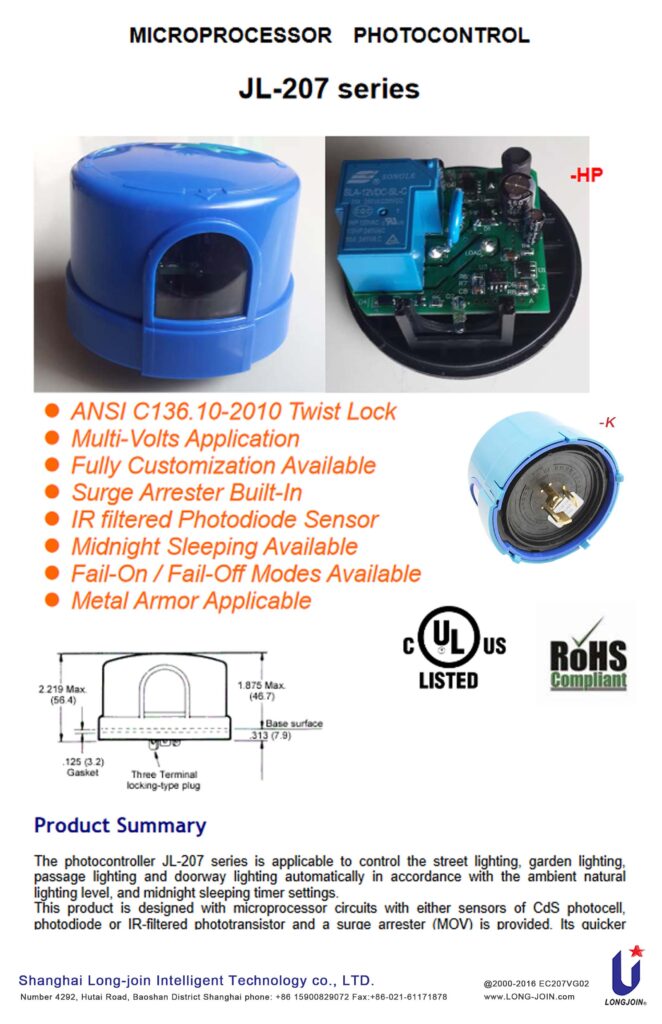
Existem exemplos reais de economia de energia com fotocélulas de junção longa?
Você deve estar se perguntando se essas tecnologias funcionam além dos testes de laboratório. A resposta curta? Sim. Nossas soluções foram adotadas em diversos ambientes com resultados tangíveis.
Projeto de Retrofit de Iluminação Municipal da América do Norte
Ao substituir os antigos sistemas de iluminação pelos interruptores fotoelétricos da Long-join, a cidade reduziu o consumo anual de eletricidade em 35%. Isso a ajudou a atingir as metas de energia e a se qualificar para subsídios para construções sustentáveis.
Projeto Europeu de Iluminação de Parques Inteligentes
Neste caso, calçadas e espaços ao ar livre do parque foram equipados com sensores fotocélulas que funcionam do crepúsculo ao amanhecer. O resultado? Uma redução de 40% no consumo de energia de iluminação, sem qualquer redução na segurança ou visibilidade.
Projeto de Eficiência Energética do Parque Industrial Asiático
Este projeto de grande escala se concentrou na substituição de luminárias antigas por lâmpadas de LED com fotocélulas. Reduzimos nosso consumo anual de energia em mais de 50%. As necessidades de manutenção diminuíram significativamente graças às verificações remotas em tempo real.
Esses estudos de caso comprovam que a tecnologia da Long-join não funciona apenas na teoria, mas também na prática. Saiba mais sobre o impacto da iluminação pública eficiente em Mundo das Cidades Inteligentes.
Quais outros benefícios as fotocélulas de economia de energia oferecem?
A iluminação pública com fotocélulas reduz o consumo de energia. Mas esse não é o único benefício. Esses sistemas ajudam a prevenir danos à sua iluminação. Eles também contribuem para objetivos ambientais de longo prazo.
Além de reduzir as contas de energia, os interruptores de fotocélulas agregam valor:
- Economia de custosContas de energia mais baixas significam retorno do investimento mais rápido. Na maioria dos casos, os sistemas se pagam em dois anos.
- Maior vida útil do equipamento: Ao ligar somente quando necessário, lâmpadas e luminárias duram mais, reduzindo custos de reposição.
- Proteção Ambiental: Menor consumo de eletricidade = menos emissões de carbono.
Área de Valor | Impacto |
Contas mais baixas | Economia de até 50% |
Menos desgaste | O equipamento dura mais |
Benefícios ecológicos | Apoia metas de sustentabilidade |

Por que você deve escolher fotocélulas de junção longa?
Quando se trata de tecnologia de iluminação externa, a experiência é fundamental. A Long-join dedica mais de duas décadas ao aprimoramento do controle de iluminação por meio de pesquisa e desenvolvimento aprofundados e soluções focadas no cliente. Nosso alcance global e nossa capacidade técnica nos tornam uma referência em controle de fotocélulas.
Não se trata apenas de tecnologia, mas também de confiança. Com mais de 20 anos de P&D, a Long-join é pioneira em inovação em sensores de fotocélulas. Atendemos clientes em todo o mundo, oferecendo soluções personalizadas por meio de nossa NEMA e Zhaga- receptáculos de fotocontrole compatíveis.
O que mais nos diferencia?
- Serviços personalizados: Obtenha fotocélulas construídas de acordo com suas especificações.
- Certificação Global: Certificado UL, CE, RoHS.
- Tecnologia Avançada:Da integração de IoT a construções resistentes às intempéries, lideramos o mercado em tecnologia de iluminação inteligente e durável.
Você pode ver nosso Tomadas e receptáculos NEMA ou Sistemas compatíveis com Zhaga para entender como apoiamos as metas globais de infraestrutura.
Conclusão
Com avançado sensores de fotocélula de luzCom recursos de controle remoto e detecção de luz ambiente de alta precisão, as fotocélulas estão redefinindo a forma como fornecemos energia para nossas ruas e espaços públicos. A Long-Join está na vanguarda, combinando tecnologia, confiabilidade e inovação.
Seja você um gestor de uma cidade pequena ou grande, você precisa das luzes fotoelétricas certas. A escolha certa reduz o desperdício de energia e aumenta a eficiência. Deixe a Long-join ajudar você a chegar lá.
Links externos:
●https://www.energystar.gov/products/lighting_fans
●https://www.smartcitiesworld.net/
●https://www.nema.org/
●https://www.zhagastandard.org/index.php?option=com_content&view=article&id=340:zhaga-permite-iluminação-de-led-para-exteriores-atualizáveis-pela-iot&catid=22

